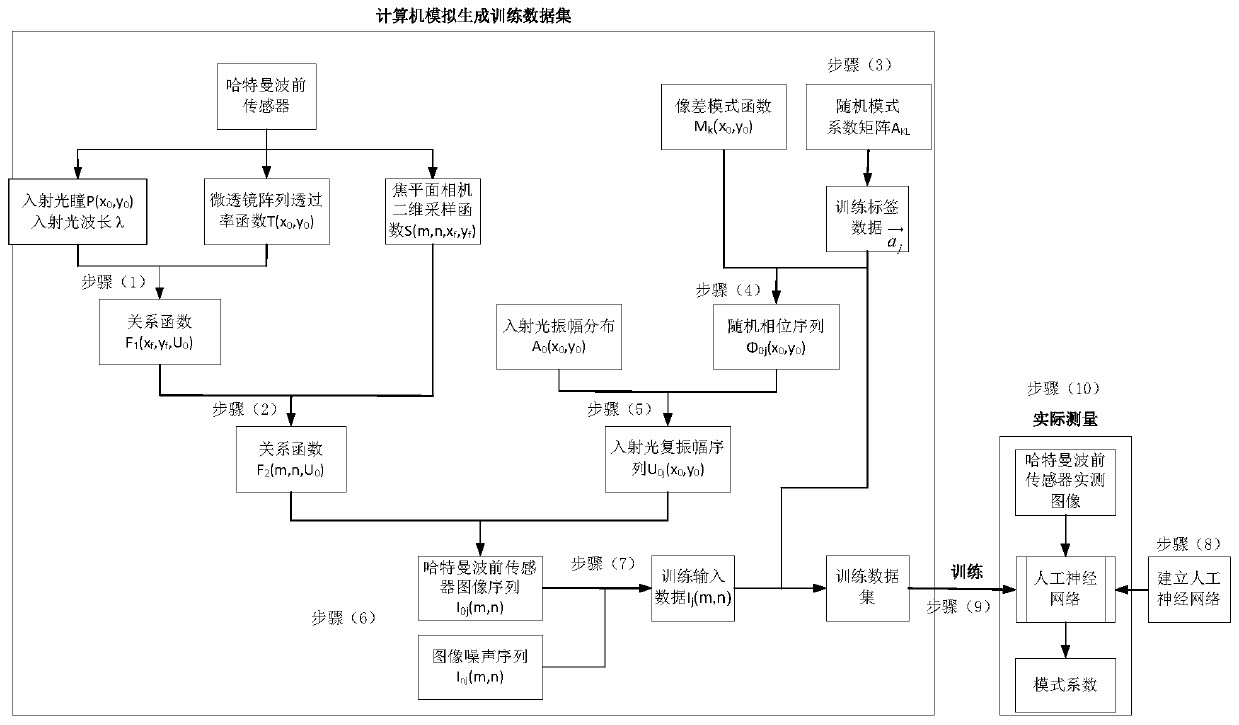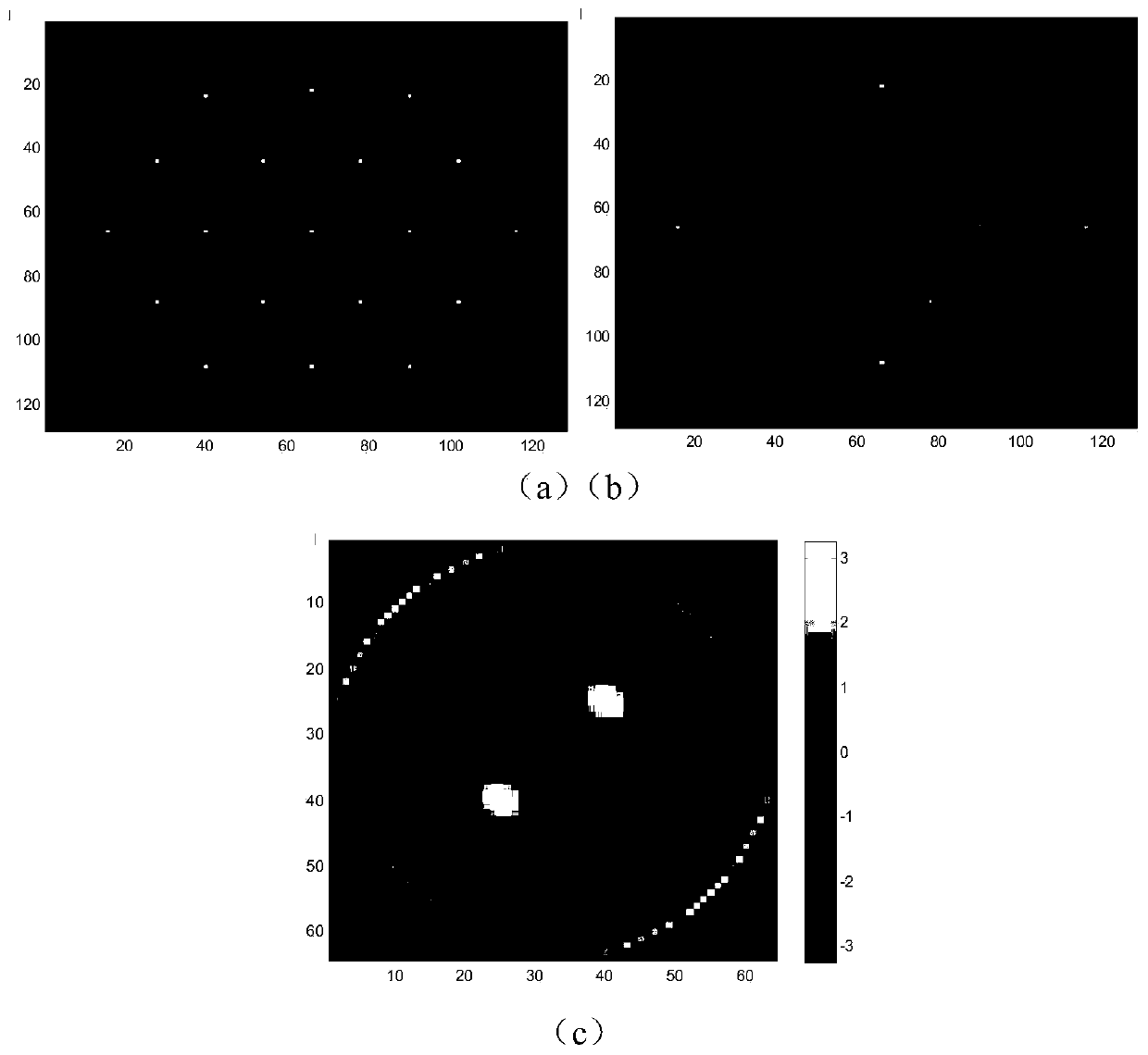Hartmann wavefront sensor mode wavefront restoration method based on deep learning
A deep learning and sensor technology, applied in the field of optical information measurement, can solve problems such as limitations, and achieve the effect of reducing mode coupling error and mode confusion
- Summary
- Abstract
- Description
- Claims
- Application Information
AI Technical Summary
Problems solved by technology
Method used
Image
Examples
Embodiment Construction
[0042] An embodiment of the present invention will be described in detail below in conjunction with the accompanying drawings.
[0043] figure 1 It is a principle flowchart of a Hartmann wavefront sensor mode wavefront restoration method based on deep learning according to the present invention, which mainly includes computer simulation to generate a training data set process and an actual measurement process. figure 2 It is a sub-aperture arrangement of a 19-unit Hartmann wavefront sensor, the entrance pupil function of the microlens is hexagonal, and the outer circle is the entrance pupil function. Such as figure 2 As shown, this embodiment uses a Hartmann wavefront sensor comprising 19 sub-apertures. Assume that the light source wavelength λ used in this embodiment is 500nm; the entrance pupil of the Hartmann wavefront sensor is a circular function P(x 0 ,y 0 ); the spacing a of the microlens in the x direction is 0.37mm, and the spacing b in the y direction is about ...
PUM
 Login to View More
Login to View More Abstract
Description
Claims
Application Information
 Login to View More
Login to View More - R&D
- Intellectual Property
- Life Sciences
- Materials
- Tech Scout
- Unparalleled Data Quality
- Higher Quality Content
- 60% Fewer Hallucinations
Browse by: Latest US Patents, China's latest patents, Technical Efficacy Thesaurus, Application Domain, Technology Topic, Popular Technical Reports.
© 2025 PatSnap. All rights reserved.Legal|Privacy policy|Modern Slavery Act Transparency Statement|Sitemap|About US| Contact US: help@patsnap.com



